How Young Pakistanis Help Themselves
Progress in the creative and performing arts in Pakistan is hindered by creeping religious fundamentalism. Nevertheless, there are artistic young people who chase their dreams.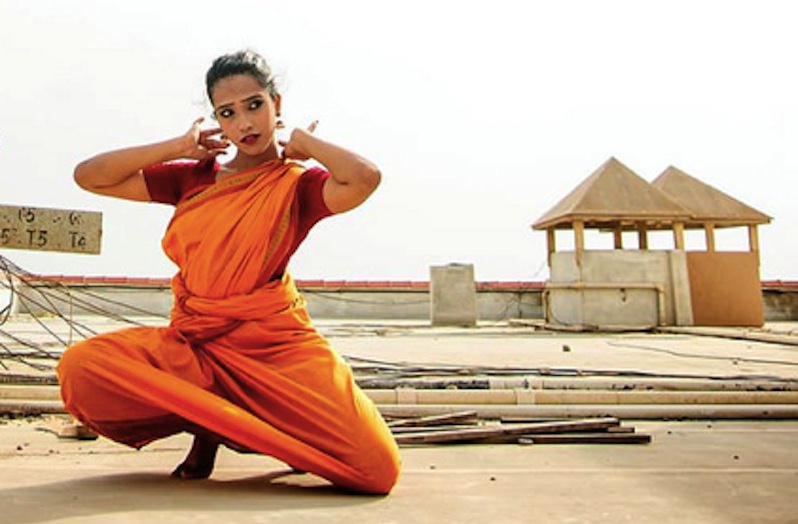 Suhaee Abro, co-founder of the performing arts group Nritaal, hopes to make dance more acceptable in Pakistani society. Noor Fareed
Suhaee Abro, co-founder of the performing arts group Nritaal, hopes to make dance more acceptable in Pakistani society. Noor Fareed
Editor’s note: This piece by Nudrat Kamal is the second in a three-part series about the unique challenges and opportunities that Pakistani youth are facing that were written for the Global Voices: Truthdig Women Reporting project (click here for more information about Global Voices). The other two stories, an article by Zubeida Mustafa and an interview by Kamal, can be found here and here, respectively. Click here for a photo album featuring images of people mentioned in this story, or view them in the slide show on Page 2.
The challenges that Pakistan’s young people face today are significant and pervasive, and can be addressed only through sweeping systemic changes. Notwithstanding these challenges, many young people are defying great odds to become conscientious and engaged members of society. They are innovative in devising activities for themselves.
Karachi, a city of 18 million, is often plagued by violence and crime. Yet these young people have found effective platforms — self-created or provided by sponsors — for initiatives to tackle their numerous problems.
First Response Initiative of Pakistan (FRIP)
The idea of FRIP was born in 2010 at the scene of a bomb blast. Dr. Jahanzeb Effendi — then a medical student — was a horrified witness to the devastation and human suffering that followed. What shook him more was the amateurish response of rescue workers, security forces and volunteers to the emergency. They had no idea how to give assistance to the injured. Effendi, who was 23 at the time, decided to get trained as a first responder so that he could help people in such situations.
He mobilized his fellow students and established an organization dedicated to training people in basic life-saving techniques in emergencies. FRIP conducts first response training for medical students and young doctors, who then in turn teach the techniques to personnel from various security agencies. FRIP has specifically tailored its comprehensive training course to indigenous trauma needs. The group also organizes free-of-charge awareness campaigns.
“The average Pakistani knows absolutely nothing about first aid and some of the practices adopted actually hurt the trauma victim,” said Dr. Nadir Haider, who joined FRIP as a medical student.
Today, FRIP has a membership of about 100 medical students and doctors, all trained first responders. Effendi is satisfied with FRIP’s progress and explained how 30 youth from the low-income area of Moach Goth who were also trained are now responsible for helping victims of trauma in their violence-riddled neighborhood.
Funding is still a challenge. Haider insisted that “life-saving knowledge should be available to everyone free of charge.” Hence these young men and women are volunteering their services without any compensation and the equipment they use has been donated by Indus Hospital.
Haider describes youth as the phase of life in which a person has the energy and the passion to help the community. “The future of health care in Pakistan is entirely dependent on young doctors and the choices they make,” he said.
The Karachi Walla
Karachi’s charming culture has been under threat for years. Violence and instability are its biggest enemies. Elders reminisce about the city’s glorious past of which the younger generation has little awareness. Yet young Karachiites have not given up on the city. Farooq Soomro was 29 when he took it on himself to unearth the city’s hidden gems five years ago. He would conduct walking tours around the city’s many scenic locations.
Soomro launched this adventure when he realized he didn’t really know the city where he was born. He looked to the Internet to explore it but was disappointed by the lack of information to satisfy his quest. Knowing about The Delhi Walla, a website that has helped many Indians discover the incredible city of Delhi, Soomro wanted something similar for Karachi. Deciding to take matters into his own hands, Soomro began putting up photos of the places in the city that he discovered during his many excursions.
When his blog The Karachi Walla took off, he met many other Karachiites like him who wished to know their city better. By popular demand, Soomro began organizing walking tours around the city. “Initially my clients were mainly tourists,” he explained. “But now a lot of Karachi youngsters have shown a keen interest in finding out more about their city.”
Soomro takes people to see lesser-known places in Karachi, such as the community houses of the Goan Christians, Sikh gurdwaras and Masonic lodges. He credits social networks and online platforms such as Instagram and Flickr for reigniting an interest in Karachi, especially in the city’s young people.
Soomro believes that the youth view Karachi from a fresh perspective. “While older people long for the city of yore, we [young people] are pragmatic and see the city in a new light, embracing its decaying beauty unconditionally,” he said. Nritaal
Progress in the creative and performing arts in Pakistan is hindered by creeping religious fundamentalism. Nevertheless, there are artistic young people who chase their dreams. For 20-year-old Suhaee Abro, dance is a passion that she refuses to give up. Having practiced classical dance since the age of 7 with renowned dancer Sheema Kermani, Abro believes that dance is her destiny, despite the fact that dancing professionally is frowned upon by conservative elements in society.
To promote the performing arts — notably dance, music, theater and poetry — Abro, along with her artist father Khuda Bux Abro and musician friend Ahsan Bari, co-founded Nritaal. This music and dance group, which consists of young and aspiring artists, was named by combining the words “nrit” (dance or theater) and “taal” (rhythm). It reflects the group’s idea of combining different art forms in new and innovative ways. The group puts together dance performances accompanied by live music.
Abro says that the best part about young dancers and musicians is their ability to bring freshness into traditional dance forms. “Young people inject creative ideas into this genre,” she said. “There are many young people like me who like to present the old art forms in a new style.” Abro believes there is a lot of passion and potential for dance as it provides an avenue for the expression of youthful talent and creativity, giving a sense of fulfilment to the performers. But she laments the dearth of opportunities. “There are only a few places that support or teach dance and music and their charges are generally high,” she said.
Lyari Youth Cafe
Nestled among the narrow, winding streets of Lyari, an area of Karachi with 1 million people and a history of drugs, crime and gang violence, is a safe haven for the youth. Known as the Lyari Youth Cafe, the two-story building (with a third under construction) is a meeting spot for young people. The venue holds regular film screenings and organizes plays as well as art and music contests to foster creativity and talent. Bakhtawar Imtiaz, a 17-year-old Lyari resident who is doing her A Levels (high school) in the social sciences, is one of several young volunteers at the cafe. “Every evening we hold one session or another to engage and entertain the youth. Sometimes they are just discussions about the goings-on in the city and around the world,” she said.
According to Bakhtawar, the opening of the cafe has significantly changed Lyari. “Before the cafe, young boys would loiter around the neighborhood tea shops and waste their time,” she explained. “And the girls would be confined to their homes.” The youth craved for a place of their own. Now 50 or 60 girls and boys show up in the evenings for the cafe sessions. Charging a modest membership fee of Rs 60 (60 cents) a month, the cafe serves free tea and coffee to visitors. Cafe volunteers tweet about their upcoming events to inform interested members.
To augment the education of the youth, the cafe arranges free tutoring for children of the neighborhood. Zohaib Panhwar, 20, who is pursuing a bachelor’s degree in business administration, is a volunteer teacher there. “The biggest challenge Lyari children face is the inaccessibility of education,” he said. Young boys do not want to study because they believe they will never find a job if they do. Girls become dropouts on the insistence of their families.
Earlier this year, the cafe organized a screening of documentaries made by 25 teenagers of Lyari. Titled “Stories of Lyari,” the event showed 10-minute films depicting stories of courage, resilience and ambition — the way the residents of Lyari really see their neighborhood. Bakhtawar, who is passionate about photography and moviemaking, was among those whose films were screened. She recalls the hardships faced by aspiring moviemakers. “There were gunshots and bomb blasts two streets away,” she remembered, “but we went ahead and made our films anyway.”
Your support matters…Independent journalism is under threat and overshadowed by heavily funded mainstream media.
You can help level the playing field. Become a member.
Your tax-deductible contribution keeps us digging beneath the headlines to give you thought-provoking, investigative reporting and analysis that unearths what's really happening- without compromise.
Give today to support our courageous, independent journalists.

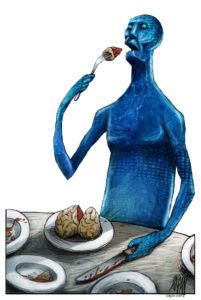
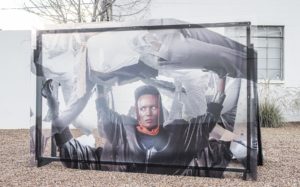

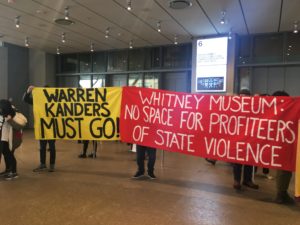
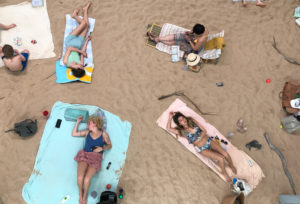
You need to be a supporter to comment.
There are currently no responses to this article.
Be the first to respond.